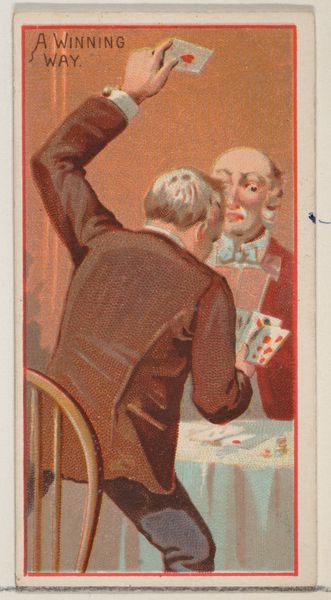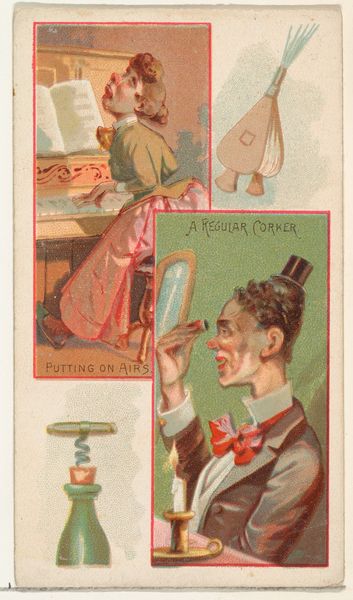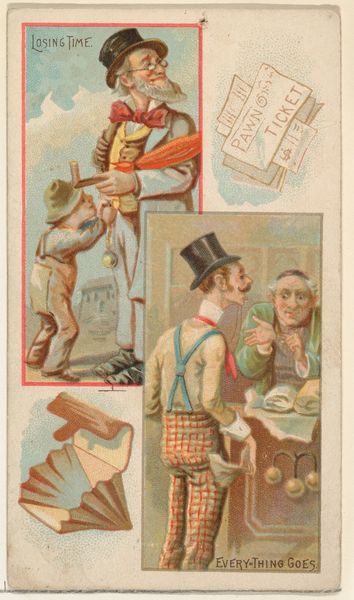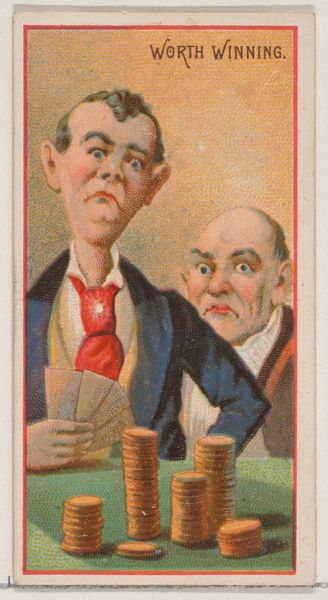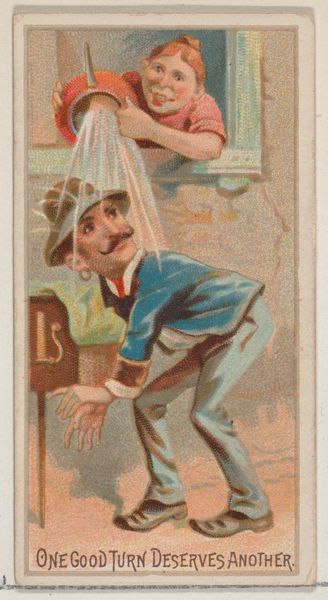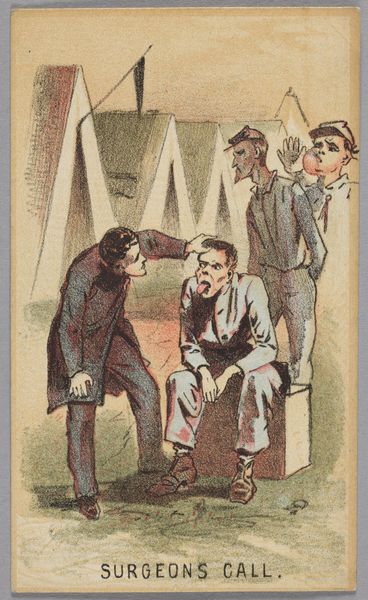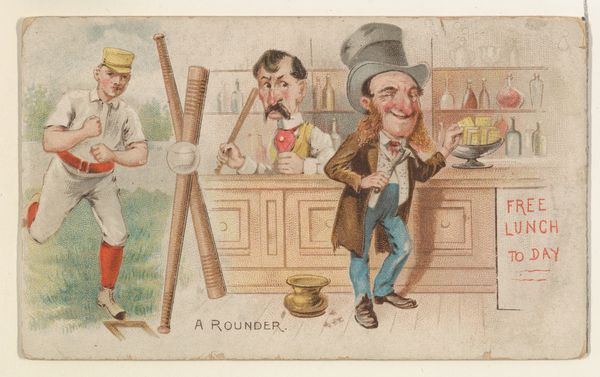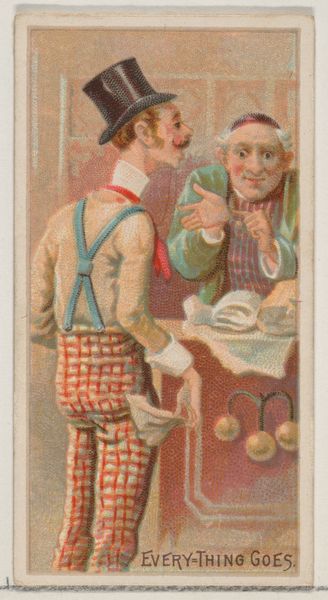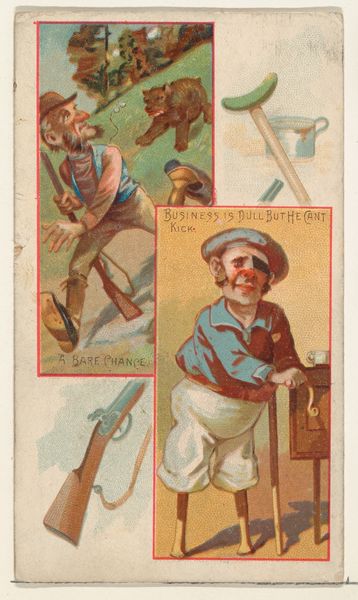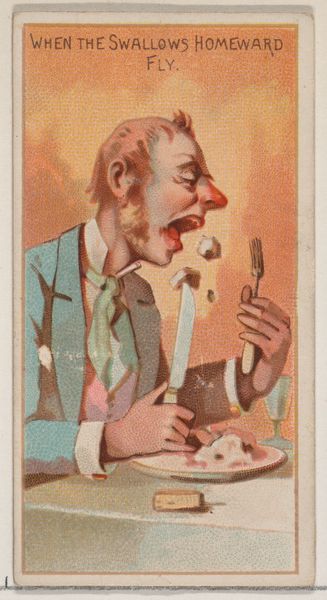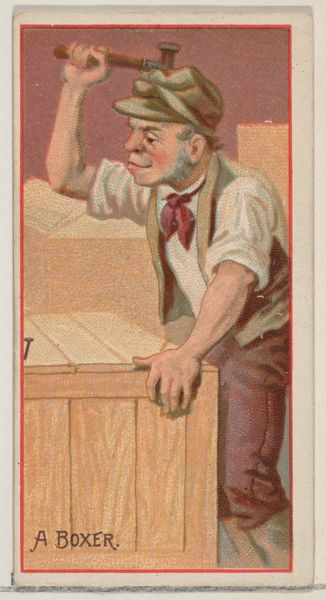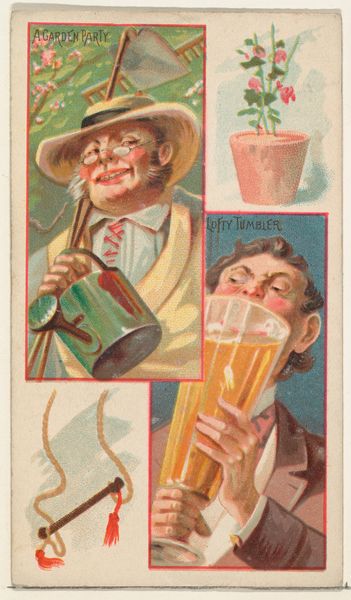
A Winning Way / Worth Winning, from the Jokes series (N118) issued by Duke Sons & Co. to promote Honest Long Cut Tobacco 1890 - 1893
0:00
0:00
drawing, coloured-pencil, print, watercolor
#
drawing
#
coloured-pencil
#
water colours
# print
#
caricature
#
caricature
#
watercolor
#
coloured pencil
#
orientalism
#
genre-painting
Dimensions: Sheet: 4 1/4 × 2 7/16 in. (10.8 × 6.2 cm)
Copyright: Public Domain
Curator: Ah, yes, “A Winning Way / Worth Winning.” A lithograph, colored pencil, and watercolor print by W. Duke, Sons & Co., circa 1890-1893. These were included in cigarette packs. Editor: It’s a bit…crude? Not what I typically expect to see in a museum. What makes it worthy of our attention today? Curator: Its value lies not in conventional aesthetics, but in what it reveals about the commodification of leisure and the circulation of images in a consumer culture. Consider the production of these cards. They were essentially tools to encourage tobacco consumption. Each print was mechanically reproduced, distributed en masse, becoming utterly disposable after the pack was opened. Editor: So the medium *is* the message, so to speak. These prints promoted not just tobacco but also the aspirational lifestyle of the men depicted. Who had time for games of chance and such wealth at hand. Curator: Precisely! This ties into discussions of labor and class. The consumer is purchasing the *idea* of leisure, a break from the routines of daily labour. But it masks the reality: the labour conditions of the people that grew, cured, and packaged the tobacco or the labourers making cheap colour prints, and it further distracts consumers of it's detrimental physical and economic costs. These seemingly simple images were integral to constructing a market and solidifying social hierarchies. Even the "jokes" serve to normalize capitalist competition and social advantage. What is funny in the picture may very well mock the worker for being gullible for ever hoping to be able to join such leisureful pastimes as playing games of chance in expensive venues. The 'worth winning' aspect shows not winning for the enjoyment but the capital gained with winning. Editor: I never considered how deeply intertwined these promotional images were with economic systems and consumer culture! It gives a whole new perspective to consider materials beyond just their aesthetic qualities. I guess it forces me to question what "art" even is. Curator: Exactly! These materials have the power to unlock a critical understanding of how commodities and social fantasies were constructed. It challenges us to expand the boundaries of our analysis and question art history’s canon, where sometimes beauty is more nefarious than apparent.
Comments
No comments
Be the first to comment and join the conversation on the ultimate creative platform.
